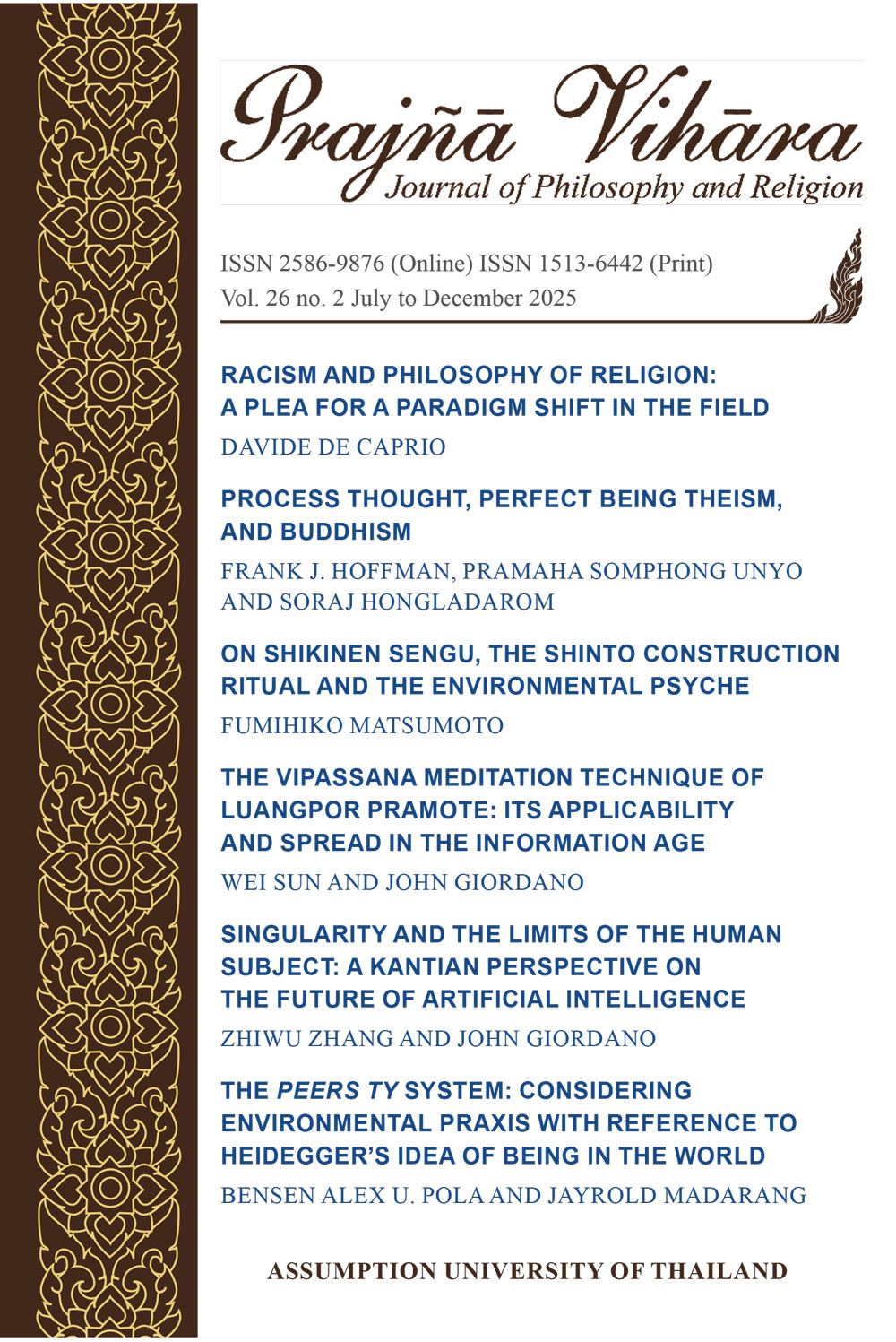ON SHIKINEN SENGU, THE SHINTO CONSTRUCTION RITUAL AND THE ENVIRONMENTAL PSYCHE
Main Article Content
Abstract
This paper explores the relationship between Shinto and environmental consciousness. Shinto is considered the indigenous spirituality of Japan. Unlike Western monotheistic religious traditions, it presupposes no separation between the spiritual and natural worlds. Instead, Shintoism teaches humans as integral parts of nature. One of ways it does this is through its rituals which condition the human psyche to harmonize with the spiritual in nature. This paper focuses upon the ritual called Shikinen Sengu, which is performed at the famous Ise Jingu shrine. The Shikinen Sengu ritual involves the rebuilding of the structure. The process of building and rebuilding conditions the human psyche to be sensitive to the spiritual aspects of the environment. This ensures not only the renewal of the shrine, but the renewal of environmental consciousness through the generations.
Submitted: 03 April 2025
Accepted: 09 June 2025
Article Details
Consent to Publish and Transfer of Copyright
By publishing in Prajñā Vihāra, the author agrees to transfer and assign to Assumption University of Thailand as the Publisher of the Journal, the copyright to the Article in any form, including any and all rights, interests and claims related to it.
The author does retain the following rights:
- The right to make further copies of the published article for their use in classroom teaching.
- The right to reuse all or part of the published article in a compilation of his or her own works or in textbooks of which they are the author or coauthor.
- The right to make copies of the published article for internal distribution within their academic institution.
- All proprietary rights other than copyright, such as patent rights.
- The Article is his or her original work, and has not been published previously and is not under consideration for publication elsewhere.
- It does not contain any matter that is obscene, libelous, or contrary to law.
- They have obtained the necessary license or written authority and paid any and all related fees for the use and reproduction of text, tables, illustrations and other copyrighted work from the owners of the intellectual property rights, and can furnish the Publisher copies of the license/written authority and proof of payment of related fees upon the signing of this Agreement.
- They have the consent of the Co-Authors of the article upon the signing of this Agreement.
- In the event that they intend to republish, reprint or translate all or part of the Article in other publications, they will secure the prior written permission from the journal Editor.
Prajñā Vihāra adopts the Creative Commons Attribution (CC BY-NC-ND) license
References
Ashkenazi, Michael. Matsuri: Festivals of a Japanese Town. Honolulu: University of Hawaii Press, 1993.
Creemers, Wilhelmus H. M. Shrine Shinto After World War II. Leiden: Brill, 1968.
Habu, Junko. Ancient Jomon of Japan. Cambridge: Cambridge University Press, 2004.
Hardacre, Helen. Shinto: A History. New York: Oxford University Press, 2017.
Kidner, David. Nature and Psyche. New York: State University of New York Press, 2001.
Nakajima, T. and Shiraishi, N. "Application of Local Yield Table Construction System to a Timber Self-Supply Production Strategy in Ise Shrine Forest with Special Focus on the Shikinen Sengu Ceremony." Japan Forestry Society. 89:21-25, 2007.
Ono, Sokyo. Shinto: The Kami Way. Tokyo: Charles E. Tuttle, 1962.
Yamakage, Motohisa. The Essence of Shinto: Japan’s Spiritual Heart. Tokyo: Kodansha International, 2006.
Yoshino, Hiroko. "A Continued Study of the Ise Shrine; Its Festivals and Constellation: In Relation to Ritual and Constellation." Japanese Journal of Ethnology, 40, 1, 1975.

